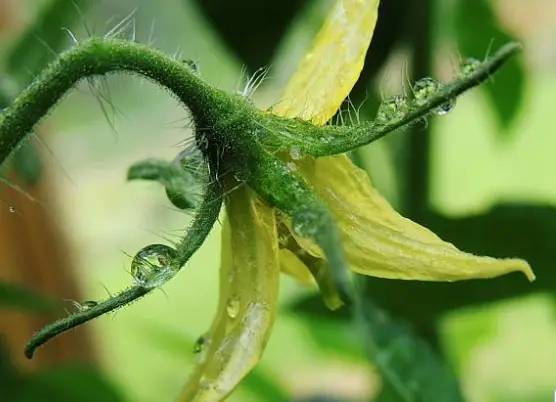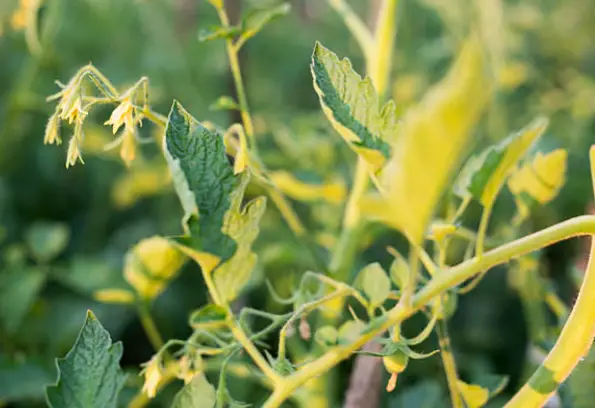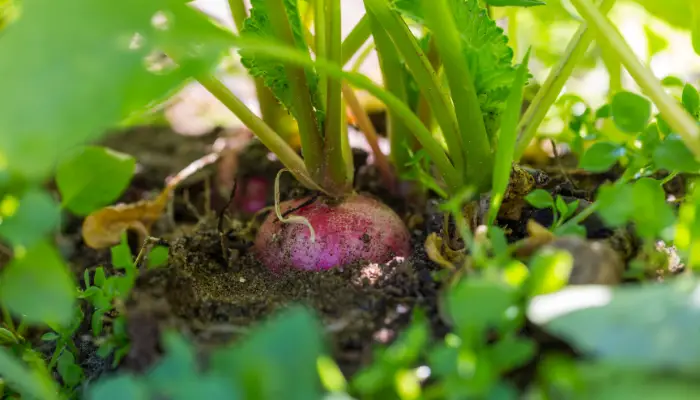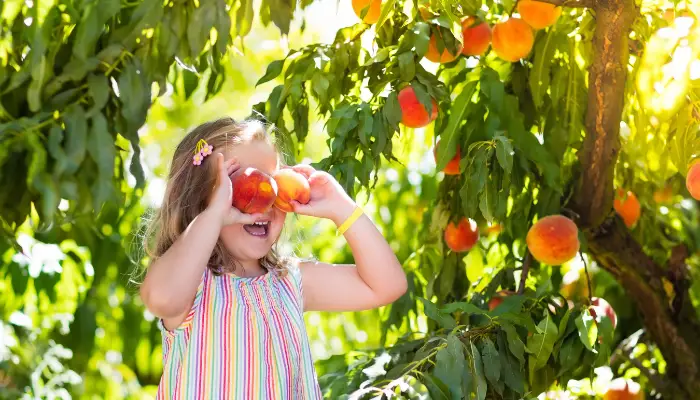Tomato Blossom Drop: Causes, Solutions, and Tips
If you are growing tomatoes, you may have noticed that sometimes your tomato flowers fall off before they turn into fruits. This is a frustrating problem that can reduce your harvest and leave you with empty branches. But what causes this phenomenon, and how can you prevent it? Here are some of the most common reasons for tomato blossom drops and what you can do to fix them.

1. Extreme Temperatures
Tomatoes are warm-season crops that need moderate temperatures to produce flowers and fruits. According to Master Tomato, tomatoes need night temperatures between 55 and 75 degrees F and day temperatures between 70 and 85 degrees F to retain their flowers. If the temperatures fall outside this range, a blossom drop occurs.
To prevent temperature-related blossom drop, you can choose varieties that are adapted to your climate and have heat or cold tolerance. You can also use mulch, row covers, shade cloth, or fans to moderate the temperature around your plants.
2. Poor Pollination
Tomato flowers are self-fertile, which means they can be pollinated with their pollen. However, they still need some help from the wind, insects, or human intervention to shake the pollen loose and transfer it to the stigma. Savvy Gardening explains that if there is not enough pollination, the flowers will not set fruit and will drop off.
To improve pollination, you can attract bees and other pollinators to your garden by planting flowers, herbs, or other companion plants. You can also gently shake or tap your tomato plants in the morning when the flowers are open and the pollen is dry.
3. Water Stress

Tomatoes need consistent and adequate watering to grow well and produce fruits. The Spruce states that water stress can cause blossom drops by affecting the plant’s ability to absorb calcium, which is essential for fruit development. Too much or too little water can also cause fluctuations in soil moisture, which can stress the plant and make it abort its flowers.
To avoid water stress, you should water your tomatoes deeply and regularly, especially during hot and dry weather. You should also use mulch to conserve soil moisture and prevent evaporation. You can check the soil moisture by inserting your finger into the soil up to the second knuckle. If it feels dry, it’s time to water it.
4. Excessive Nitrogen
Nitrogen is an important nutrient for plant growth, but too much of it can cause problems for tomato plants. Happiness Tomato warns that excessive nitrogen can stimulate vegetative growth at the expense of flowering and fruiting. It can also interfere with the uptake of other nutrients, such as phosphorus and potassium, which are essential for flower and fruit production.
To prevent nitrogen overload, you should use a balanced fertilizer that has a low nitrogen content and a high phosphorus and potassium content. You should also avoid using fresh manure or grass clippings as mulch, as they can release too much nitrogen into the soil.
5. Pests and Diseases
Pests and diseases can also cause tomato blossoms to drop by damaging the plant’s health and vitality. Some of the common pests and diseases that affect tomato flowers are aphids, thrips, spider mites, whiteflies, blossom end rot, early blight, late blight, verticillium wilt, fusarium wilt, and bacterial spot. Farmers’ Almanac advises that these pests and diseases can cause flower drop by sucking sap, spreading viruses, creating wounds, or blocking water and nutrient transport.
To protect your tomato plants from pests and diseases, you should practice good sanitation, crop rotation, companion planting, pruning, and organic pest control methods. You should also monitor your plants regularly for any signs of infestation or infection and treat them promptly.
Table: Summarize The Causes and Solutions For Tomato Blossom Drop
| Cause | Solution |
|---|---|
| Extreme Temperatures | Choose suitable varieties; use mulch, row covers, shade cloth, or fans |
| Poor Pollination | To attract pollinators, shake or tap plants |
| Water Stress | Water deeply and regularly, and use mulch |
| Excessive Nitrogen | Use balanced fertilizer; avoid fresh manure or grass clippings |
| Pests and Diseases | Practice good sanitation, crop rotation, companion planting, pruning, and organic pest control |
Conclusion
Tomato blossom drop is a common but preventable problem that can affect your tomato yield and quality. By understanding the causes of this problem and applying the solutions mentioned above, you can help your tomato plants produce more flowers and fruits.
Here are 15 FAQs on Tomato Blossom Drop
Q: What is a tomato blossom drop?
A tomato blossom drop is a condition where tomato flowers fall off before they turn into fruits. It can reduce your tomato yield and quality.
Q: What causes tomato blossoms to drop?
A: Tomato blossom drop can be caused by various factors, such as extreme temperatures, poor pollination, water stress, excessive nitrogen, pests and diseases, or stress.
Q: How can I prevent a tomato blossom drop?
You can prevent tomato blossom drop by choosing suitable varieties, providing adequate pollination, watering regularly and deeply, using balanced fertilizer, protecting from pests and diseases, and avoiding stress.
Q: How does temperature affect tomato blossom drop?
Temperature is one of the most common causes of tomato blossom drops. Tomatoes need moderate temperatures to produce flowers and fruits. If the temperature is too high or too low, the flowers will not set fruit and will drop off.
Q: What is the ideal temperature range for tomatoes?
A: According to Master Tomato, tomatoes need night temperatures between 55 and 75 degrees F and day temperatures between 70 and 85 degrees F to retain their flowers.
Q: How can I moderate the temperature around my tomato plants?
You can use mulch, row covers, shade cloth, or fans to moderate the temperature around your tomato plants. You can also choose varieties that are adapted to your climate and have heat or cold tolerance.
Q: How does pollination affect tomato blossom drops?
Pollination is another important factor in tomato flower and fruit production. Tomato flowers are self-fertile, but they still need some help from wind, insects, or human intervention to shake the pollen loose and transfer it to the stigma. If there is not enough pollination, the flowers will not set fruit and will drop off.
Q: How can I improve pollination for my tomato plants?
A: You can attract bees and other pollinators to your garden by planting flowers, herbs, or other companion plants. You can also gently shake or tap your tomato plants in the morning when the flowers are open and the pollen is dry.
Q: How does water affect tomato blossom drops?
A: Water is another essential factor for tomato growth and development. Water stress can cause blossom drops by affecting the plant’s ability to absorb calcium, which is essential for fruit development. Too much or too little water can also cause fluctuations in soil moisture, which can stress the plant and make it abort its flowers.
Q: How much water do my tomato plants need?
A: You should water your tomatoes deeply and regularly, especially during hot and dry weather. You should also use mulch to conserve soil moisture and prevent evaporation. You can check the soil moisture by inserting your finger into the soil up to the second knuckle. If it feels dry, it’s time to water it.
Q: How does nitrogen affect tomato blossom drops?
Nitrogen is an important nutrient for plant growth, but too much of it can cause problems for tomato plants. Excessive nitrogen can stimulate vegetative growth at the expense of flowering and fruiting. It can also interfere with the uptake of other nutrients, such as phosphorus and potassium, which are essential for flower and fruit production.
Q: How much nitrogen do my tomato plants need?
A: You should use a balanced fertilizer that has a low nitrogen content and a high phosphorus and potassium content. You should also avoid using fresh manure or grass clippings as mulch, as they can release too much nitrogen into the soil.
Q: How do pests and diseases affect tomato blossoms?
Pests and diseases can also cause tomato blossoms to drop by damaging the plant’s health and vitality. Some of the common pests and diseases that affect tomato flowers are aphids, thrips, spider mites, whiteflies, blossom end rot, early blight, late blight, verticillium wilt, fusarium wilt, and bacterial spot. These pests and diseases can cause flower drops by sucking sap, spreading viruses, creating wounds, or blocking water and nutrient transport.
Q: How can I protect my tomato plants from pests and diseases?
A: You should practice good sanitation, crop rotation, companion planting, pruning, and organic pest control methods. You should also monitor your plants regularly for any signs of infestation or infection and treat them promptly.
Q: How does stress affect tomato blossom drops?
Stress is another factor that can trigger a tomato blossom drop. Stress can be caused by various factors, such as transplant shock, pruning shock, root damage, nutrient deficiency or toxicity, and herb








